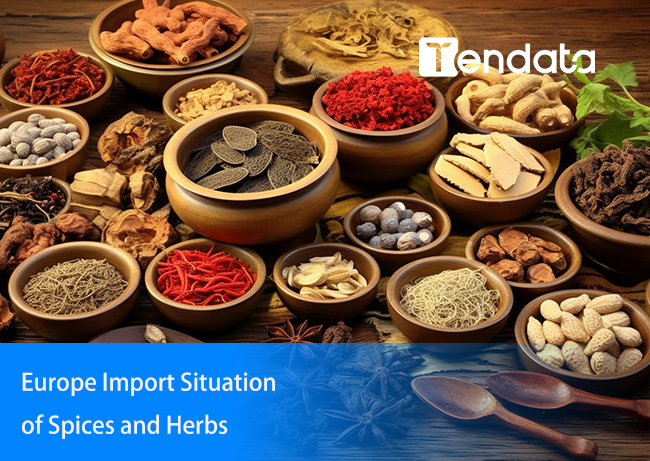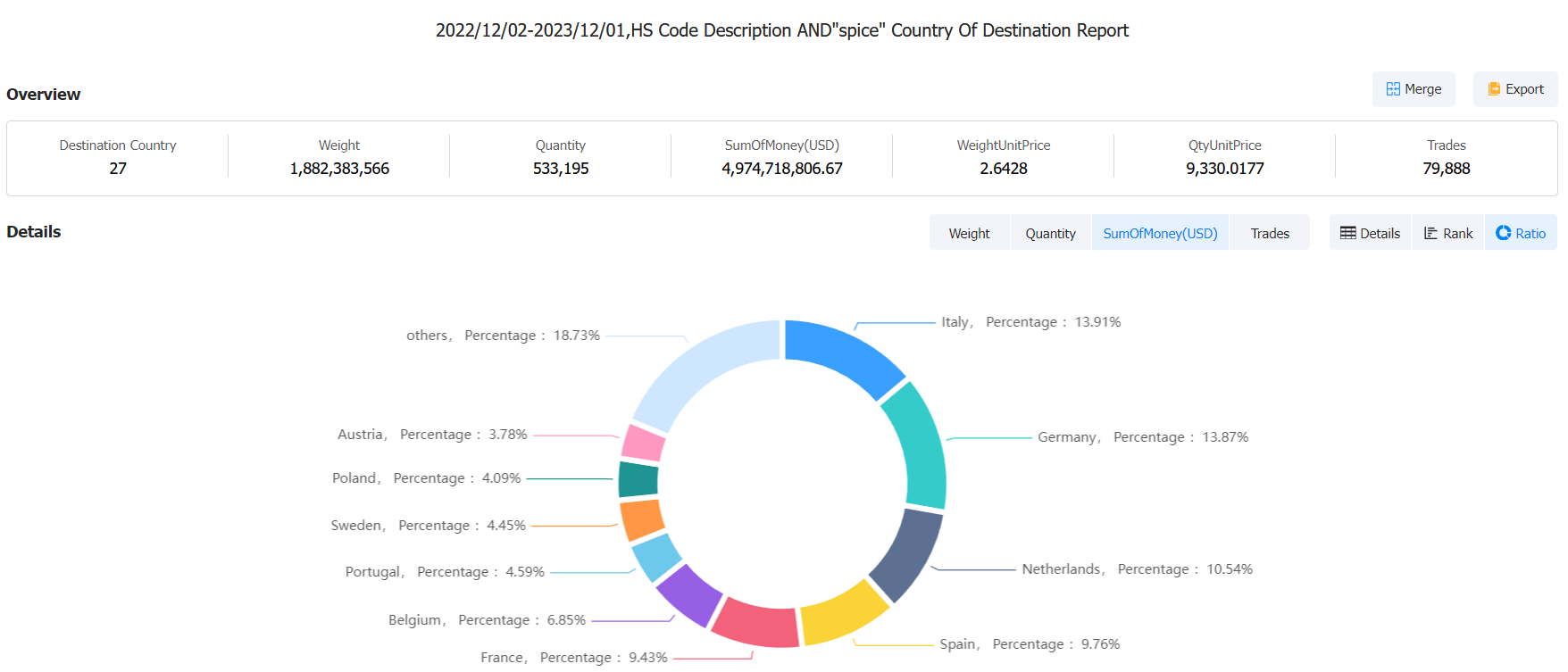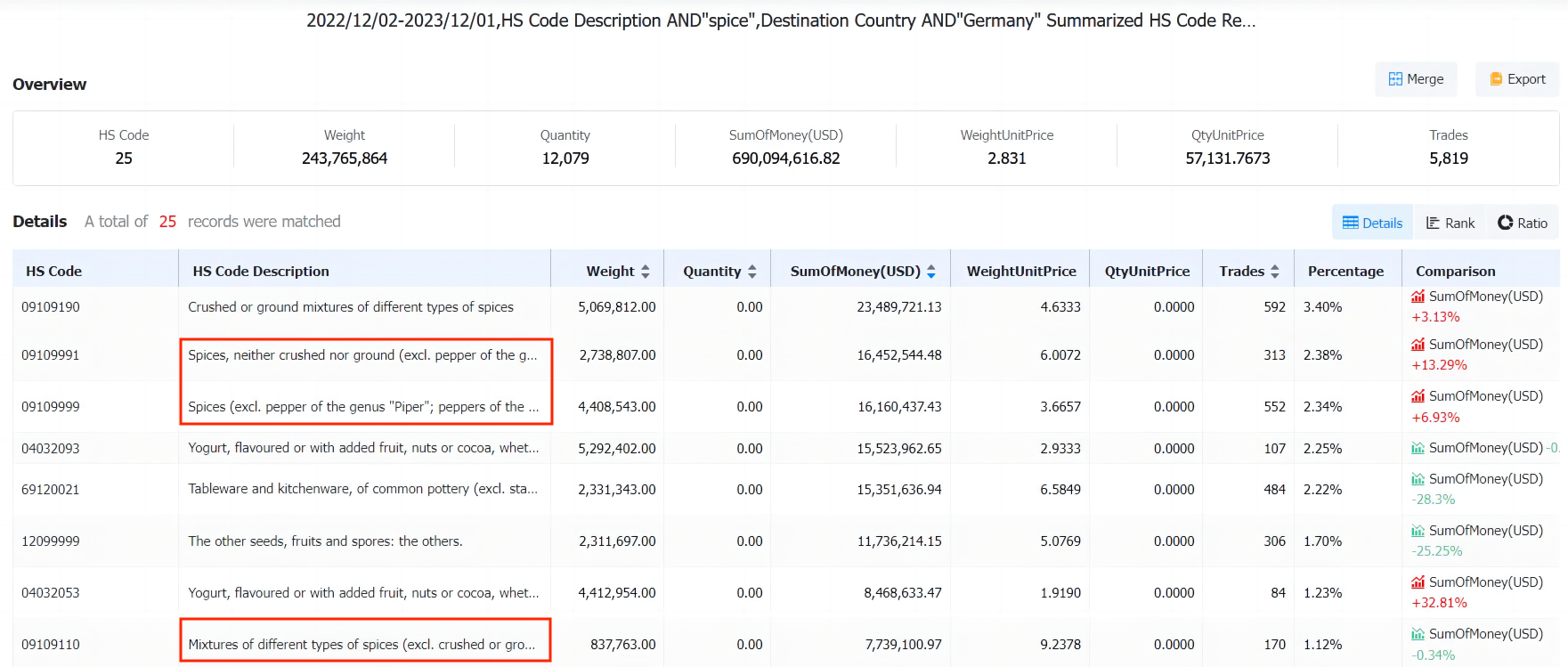 Import News
Import News
 20-03-2024
20-03-2024
The demand for spices and herbs in Europe is substantial. Among the most imported spice and herb products into Europe are ginger, dried chili peppers, pepper, turmeric, cinnamon, and vanilla.

How Does the Import Situation of Spices and Herbs into Europe Look Like?
Europe stands as a mature and diversified market for spices and herbs, with five out of the top ten importing countries globally located within its borders. The overall demand in Europe remains relatively stable, with significant transaction volumes. Major importers of spices and herbs in Europe include the Netherlands, Germany, France, Spain, the United Kingdom, and Poland.
On average, Europe imports approximately 450,000 tons of spices and herbs annually from developing countries, constituting around 20-23% of the global average annual production. Europe serves as a significant destination for higher-priced spices and herbs, as evidenced by its share of 27-30% of the global import value.
Distinct Regional Demands for Spices and Herbs
European countries can be broadly categorized into four different regions: Western Europe, Northern Europe, Southern Europe, and Eastern Europe, each with its unique supply dynamics.
Key features and differences include:
- Western Europe accounts for over half of the spice and herb imports into Europe, with the Netherlands and Germany as the two largest importing countries, while France represents another major market. Western Europe serves as a primary destination for spices and herbs from South America (Brazil and Peru) and Southeast Asia. It also serves as a major market for intra-European trade from both Western and Southern Europe.
- Southern Europe represents a relatively smaller market for spices and herbs, comprising 19% of European imports. Notably, the region stands out for importing a significant amount of chili peppers from East Asia, primarily from China.
- Northern Europe contributes to 18% of European imports, with the United Kingdom occupying about two-thirds of the entire market. This region distinguishes itself with relatively high imports from South Asia (dry chili peppers, turmeric, and cumin from India) and East Asia (ginger from China), while imports from South America remain limited.
- Eastern Europe accounts for 11% of European imports, with Poland representing over 40% of imports in this region. The majority of imports into this region come from East Asia (China), Southeast Asia (primarily Vietnam), as well as Western and Southern Europe.
Which Ports Are Crucial for Importing Spices and Herbs into Europe?
Key ports for spices and herbs in Europe include Rotterdam (Netherlands), Hamburg (Germany), Antwerp (Belgium), Felixstowe (United Kingdom), Algeciras (Spain), and Marseille (France). Upon arrival at these ports, products are unloaded and transported by trucks to other regions within Europe. Rotterdam port stands as the largest port in Europe.
After Understanding the Market Trends, How Do You Conduct a Detailed Analysis of the European Spices and Herbs Market in Terms of Specific Products?
Tendata provides you with detailed customs data, allowing you to gain a detailed understanding of the European spices and herbs market. For example, when you are interested in spice exports, you can enter "spice" in the Tendata customs data platform to see which European countries import more spices:

You can further filter Europe's spice customs data with advanced filters. For example, if you are very interested in exporting spices to Germany, then select the country as Germany and view the HS code list to see which spices Germany imported last year, the weight, quantity, and amount (USD) , weight unit price, quantity unit price, trade volume, proportion, and comparison with import volume in previous years, etc.:

Category
Leave Message for Demo Request or Questions


 T-info
T-info T-discovery
T-discovery

 My
Tendata
My
Tendata Market Analysis
Market Analysis Customer
Development
Customer
Development Competitor
Monitoring
Competitor
Monitoring Customer Relationship
Customer Relationship





































































































































